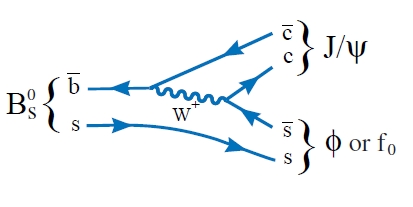Abstract
The purpose of our study was to confirm the mass of the J/psi meson through CMS histograms of muon and antimuon decays. The known rest mass of the J/Psi meson is 3.0969 GeV/c2. It also has an average lifetime of 7.2 x 10-21 s. We found that the CMS detector was not accurate in detecing the J/Psi meson.
|
|
|
|
Introduction
The J/Psi meson is a subatomic particle, consisting of a charm quark and charm anti-quark. Samual C.C. Ting, a researcher at MIT, is credited for finding the "J" particle using Brookhaven's Alternating Gradient Synchrotron. The AGS instrument used by Ting used high-intensity proton beams to bombard a stationary target in order to produce showers of particles for detection. At nearly the same time, Burton Richter and a team of scientists found the "psi" particle at the Stanford Linear Accelerator Center. For both experiments, a strong peak in electron and positron production at 3.1 billion GeV led the scientists to suspect a new particle. The particle came to be known as the "J/Psi". Both men recieved the Nobel Prize in 1976 for their discovery. In our eLab, we will be performing a calibration test for the discovery of the J/psi particle.

|
|
|
Procedures
In order to investigate the mass of the J/psi muon as shown in CMS data, we analyzed histograms displaying decays of mu +/+, mu -/-, and mu +/- from the "exploration" tab. The bin width of the histograms were changed for the most accurate reading; 0.01, 0.09, and 0.05 respectively. We then compared the known mass of the J/Psi muon, 3.0969 GeV/c2, to the mass reported in the CMS data. If the data from the histograms are consistent with the known mass then it can be said that the data was accurate and the J/psi muon was correctly detected.
|
|
|
Results
Figure One, a histogram showing mu +/-, has a spike of events at around 3.1 GeV/c2. This mass is consistent with the known mass of the J/Psi muon, 3.0969 GeV/c2. Figure Two is not accurate, because there is a spike of events at a mass of 2.50 GeV/c2. Therefore the J/Psi meson is not detected in Figure Two, showing mu +/+ and mu -/-.
|
|
|
Discussions & Conclusions
We conclude that the CMS detector can both detect and miss the J/Psi muon as shown in the results section.
|
|
|
Bibliography
https://www.bnl.gov/bnlweb/history/nobel/nobel_76.asp
http://www.science20.com/quantum_diaries_survivor/lhcb_observes_bs_decays_jpsi_f0_pairs-75874
|
|
|